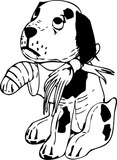
One of my students showed up with a swollen finger last week. C injured it during a non-musical activity and after several days, the swelling was increasing. I demanded that she go see a doctor to get that finger checked out. C injured the middle finger of her left hand, which has presented us with the challenge of how to structure practices and lessons. It will take some time for her hand to heal but she can't take time off from practicing if she is to take her exam in the spring.
I have decided to zoom in on her weak spots. On Monday, I attended a workshop by the Royal Conservatory of Music, unveiling their new technical requirements. Some ideas were new while some I needed the refresher on.
C, like the rest of my students will be drilling their scales, chords and arpeggios at least five times per practice; playing them differently each time. Here are some of the variations:
play legato
play staccato
play portato
vary the dynamics
add a crescendo while ascending and diminuendo when descending
vary the rhythm (straight eighths, jazz triplets, even triplets, dotted half note followed by a quarter note)
vary the accents (accent beat one the first time, beat two the second, etc.)
play a repeated note scale (C-C-C D-D-D E-E-E)
play one octave as quarter notes, two octaves as eighth notes, three octaves as triplets and four octaves as sixteenth notes
play chords up the scale
In C's case, she'll have to just practice her right hand and rest her left. With these exercises, it's imperative to use proper fingering.
Tonight, we focused on phrase shaping, continuation notes and right hand rhythms. Next week, we'll tap practice the left hand rhythms.
C is using this opportunity to work harder on her ear training and theory.
The following are informative articles/discussions on dealing with piano-related injuries:
Please feel free to share your tips on injury prevention or dealing with injuries.
(c) 2007 by Musespeak(tm), Calgary, AB, Canada. All rights reserved.
